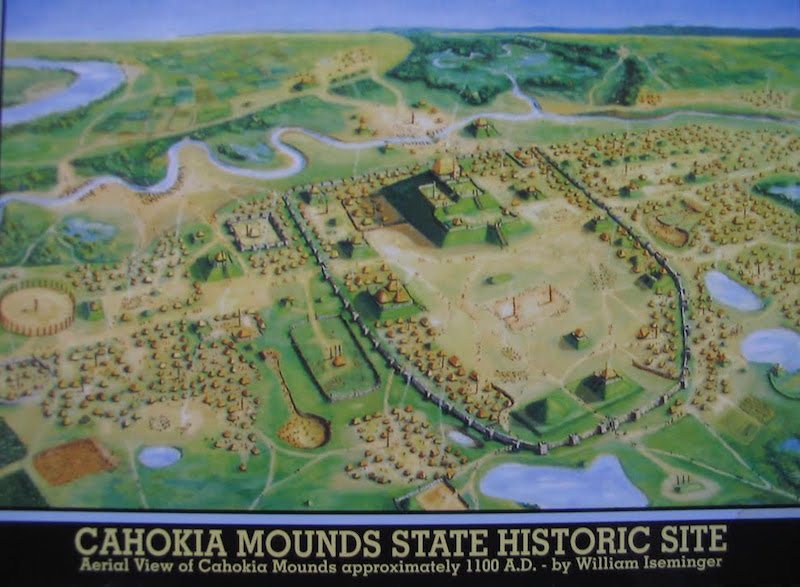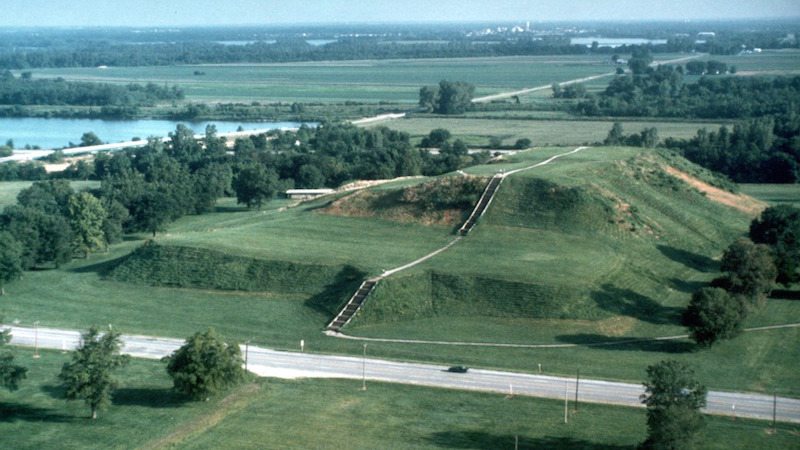The Cahokia Mounds
Episode #5 of the course “Mysterious World Landmarks”
In Illinois in the United States, a series of man-made earthen mounds and ruins from the largest pre-Columbian settlement north of Mexico marks the site of a once-great ancient Native American society. From 1100 to 1200 CE the people who lived in this city had a complex chieftain society, with total numbers of city inhabitants estimated between 10,000 and 20,000 people. The site today is called the Cahokia Mounds (mistakenly) after the people who were living there when the city ruins were discovered by Europeans. However, the original builders and designers had likely abandoned the city as long as 600 years before. They had no written language, and there is no record detailing their society.

The ruins show that the city of Cahokia was spread over nearly 4000 acres and included over 120 mounds. In the center of the city is Monk’s Mound, which towers over 100 feet; it is the single tallest Prehistoric man-made mound in North America. In 1982, UNESCO dedicated the mounds as a World Heritage Site. Archeological research shows that the mounds at Cahokia were built by carrying baskets of dirt from nearby sites, leaving deep burrows throughout the surrounding countryside. Agriculture and construction have destroyed many burrows and mounds over the years, but Monk’s Mound and its surrounding landmarks, the Cahokia Mounds, include a protected area of 68 mounds.

Just across the Mississippi River from St. Louis, Missouri, the Cahokia Mounds are easily accessible and visited by nearly a half-million people every year. Visitors from around the world travel to these ruins in Illinois for one of the greatest examples of prehistoric people native to North America.
Share with friends

